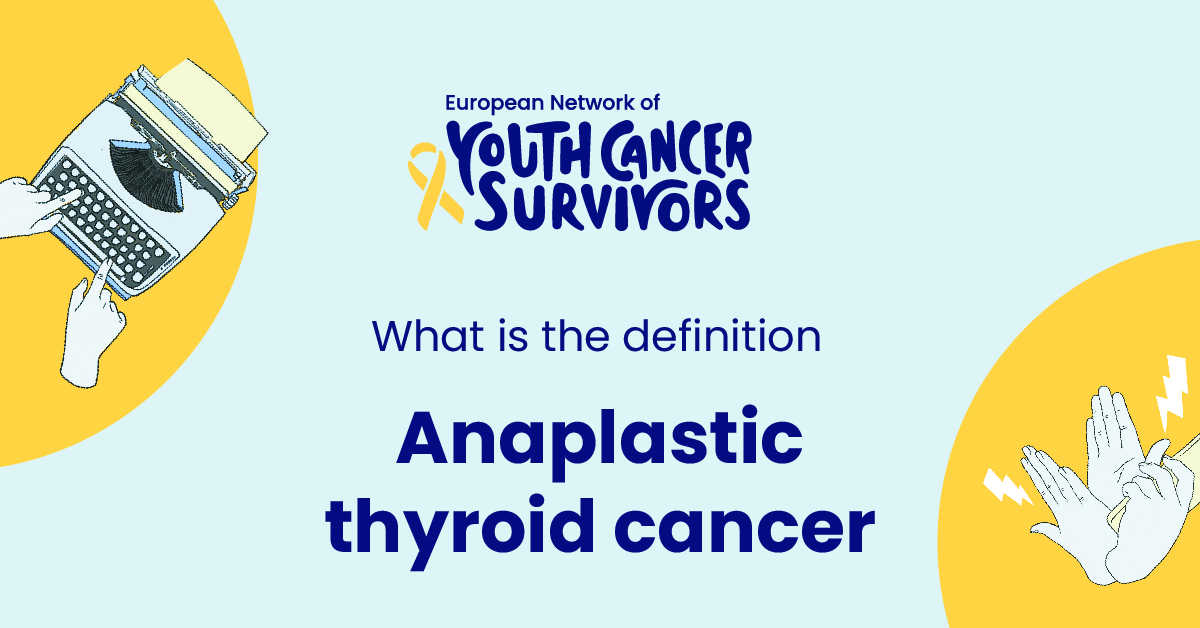
Thyroid cancer, a disease characterized by an abnormal and uncontrolled growth of cells in the thyroid gland, occurs in several forms. Among them, Anaplastic thyroid cancer stands out because of its rarity and severity.
A brief overview of Thyroid Cancer
The thyroid gland, located at the base of your neck, is responsible for producing vital hormones that regulate numerous metabolic processes throughout the body. While there are several types of thyroid cancers, the four most common forms are papillary, follicular, medullary, and anaplastic. Each derives its name from the type of cells involved.
A Highlight on Anaplastic Thyroid Cancer
Anaplastic Thyroid Cancer (ATC) is a form of thyroid cancer that progresses very quickly. It is also the least common type, representing less than 2% of all thyroid cancers. However, its impact is significant, being one of the most lethal forms of cancer due to its rapid spread and resistance to therapy.
Understanding the Thyroid Gland
Anatomy of the Thyroid Gland
The thyroid gland is a small, butterfly-shaped gland situated at the base of the neck, just below Adam’s apple. It consists of two lobes, connected by a thin piece of tissue called the isthmus. The microscopic follicular cells within the thyroid produce important hormones—thyroxine (T4) and triiodothyronine (T3)—that play a significant role in the body’s metabolism, growth, and development.
Function of the Thyroid Gland
The hormones produced by the thyroid gland regulate vital body functions. They control metabolism, influence heart rate, regulate body temperature, and even contribute to protein synthesis. The thyroid also produces calcitonin, a hormone that helps control calcium levels in the body.
Definition: Anaplastic Thyroid Cancer
Detailed Explanation of Anaplastic Thyroid Cancer
Anaplastic thyroid cancer (ATC) is an invasive type of thyroid cancer that grows rapidly and spreads to other body parts, including the lungs and bones. It starts in the follicular cells of the thyroid and its cells look very different from normal cells under a microscope. Despite being rare, ATC is very aggressive and often difficult to treat effectively.
Comparing Anaplastic Thyroid Cancer to other Thyroid Cancers
Compared to other forms of thyroid cancers such as papillary and follicular, anaplastic thyroid cancer is more aggressive and has a poorer prognosis. While other thyroid cancers grow slowly and can often be successfully treated with surgery or radioactive iodine, ATC often spreads quickly to other parts of the body and is usually resistant to therapy.
Get to know us better
If you are reading this, you are in the right place – we do not care who you are and what you do, press the button and follow discussions live

Causes and Risk Factors of Anaplastic Thyroid Cancer
Genetic Mutations Associated with Anaplastic Thyroid Cancer
Genetic mutations are a significant factor associated with anaplastic thyroid cancer. Specific gene changes recognized in ATC include alterations in the BRAF, RAS, and p53 genes. Possessing these mutations does not guarantee the development of ATC, but their presence considerably heightens the risk.
Environmental and Lifestyle Risk Factors
Particular risk factors increase the likelihood of developing ATC. Exposure to high levels of radiation, especially during childhood, is a known inducer of thyroid cancers. Age, gender, and a past history of goiter or other thyroid diseases also play a considerable role. ATC is more prevalent among females and those above 60 years.
Signs and Symptoms of Anaplastic Thyroid Cancer
Early Warning Signs
Early detection of ATC is often challenging. Some of the initial symptoms can include a rapidly increasing, painless lump in the front of the neck, trouble swallowing or breathing, changes in the voice, or persistent cough.
Progression of Symptoms as the Disease Advances
As anaplastic thyroid cancer progresses, the symptoms become more severe, and can include voice changes due to vocal cord paralysis, difficulty swallowing or breathing, neck pain, cough, and sometimes symptoms related to metastasis to other body parts.
Diagnosis and Staging of Anaplastic Thyroid Cancer
Methods Used in Diagnosing Anaplastic Thyroid Cancer
The diagnosis of ATC involves several steps, commencing with a detailed medical history and physical examination. If suspicions arise, additional tests such as blood tests, imaging studies (like CT, MRI or PET scans), and a biopsy- where a sample of thyroid tissue is removed for examination under a microscope- may be carried out.
Understanding the Staging Process of the Cancer
Cancer staging is crucial to determine the extent of cancer spread and to plan the most effective treatment strategy. ATC is often studied using the TNM system (Tumour, Nodes, Metastasis). However, most detected ATC cases are already in advanced stages, causing a direct impact on the possible treatment options and survival rates.
Treatment Options for Anaplastic Thyroid Cancer
Overview of Current Treatment Protocols
The treatment plan for ATC is typically multidisciplinary, involving combinations of surgery, chemotherapy, and radiation therapy. Due to ATC’s aggressive nature, patients may need to start treatment immediately after diagnosis.
Breakdown of Specific Treatments: Surgery, Radiation, Chemotherapy, etc.
Surgery for ATC aims to remove as much of the tumor as possible. In some cases, the whole thyroid may need removal. Post-surgery, radiation therapy is commonly applied to kill remaining cancer cells. Chemotherapy, often used in combination with radiation, also plays a role when surgery isn’t an option or when the cancer has spread to other parts of the body. In some select cases, targeted drug therapy may be effective.
Living with Anaplastic Thyroid Cancer: Prognosis and Life Expectancy
The Impact of Anaplastic Thyroid Cancer on Quality of Life
Living with ATC can be challenging due to its aggressive nature and fast progression. It frequently affects fundamental processes like swallowing and breathing, reducing patients’ quality of life. The subsequent emotional and psychological impact can also be significant. Consulting mental health and support groups can be highly beneficial.
Statistics on Survival Rates and Life Expectancy
Typically, the prognosis for anaplastic thyroid cancer patients is severe. Still, survival rates vary depending on factors like age, overall health, and how far the cancer has spread at the time of diagnosis. The average survival for patients with ATC is usually under one year.
Recent Advancements and Research on Anaplastic Thyroid Cancer
Overview of Ongoing Research and Clinical Trials
Robust research efforts are underway to understand better and treat ATC. Numerous clinical trials are investigating novel therapeutic strategies including targeted therapies and immunotherapies. These seek to maximize cancer cell eradication while minimizing damage to regular cells.
Potential Future treatments on the Horizon
Recent advancements have seen the development of drugs that target specific genetic alterations in ATC cells. Immunotherapy, where the body’s immune system is stimulated to combat the cancer cells, also shows promising outlooks and is currently under investigation in many clinical trials.
Conclusion
Anaplastic thyroid cancer, while rare, is a severe form of cancer which requires aggressive treatment and comprehensive medical attention. While the overall prognosis is typically grim, ongoing research and increasing knowledge about the disease provide hope for improving these survival rates and offer better treatments. Intensive supportive care is essential to managing symptoms and maintaining the quality of life for ATC patients.
Frequently Asked Questions
- Is Anaplastic thyroid cancer common?
No, anaplastic thyroid cancer is rare, comprising less than 2% of all thyroid cancers. However, it is one of the most severe forms.
- What differentiates Anaplastic thyroid cancer from other types of thyroid cancer?
Anaplastic thyroid cancer is different from other types due to its extremely aggressive nature. Unlike other thyroid cancers that grow slowly, ATC grows rapidly and often spreads to other parts of the body.
- Can Anaplastic thyroid cancer be prevented?
While there is no surefire way to prevent ATC, minimizing exposure to known risk factors such as radiation can lower the risk. Additionally, living a healthy lifestyle can significantly decrease the chances of developing most cancers, including ATC.
- How is Anaplastic thyroid cancer treated?
Treatment for ATC generally involves a combination of surgery, radiation therapy, and chemotherapy. Some patients may also benefit from targeted drug therapy.
- What is the life expectancy of someone diagnosed with Anaplastic thyroid cancer?
Life expectancy for patients with ATC varies considerably depending on the stage of the disease at diagnosis and the patients’ overall health. On average, the survival period is usually under one year. However, ongoing advancements and research are working towards improving these figures.

















Comments
Thank you. Comment sent for approval.
Something is wrong, try again later